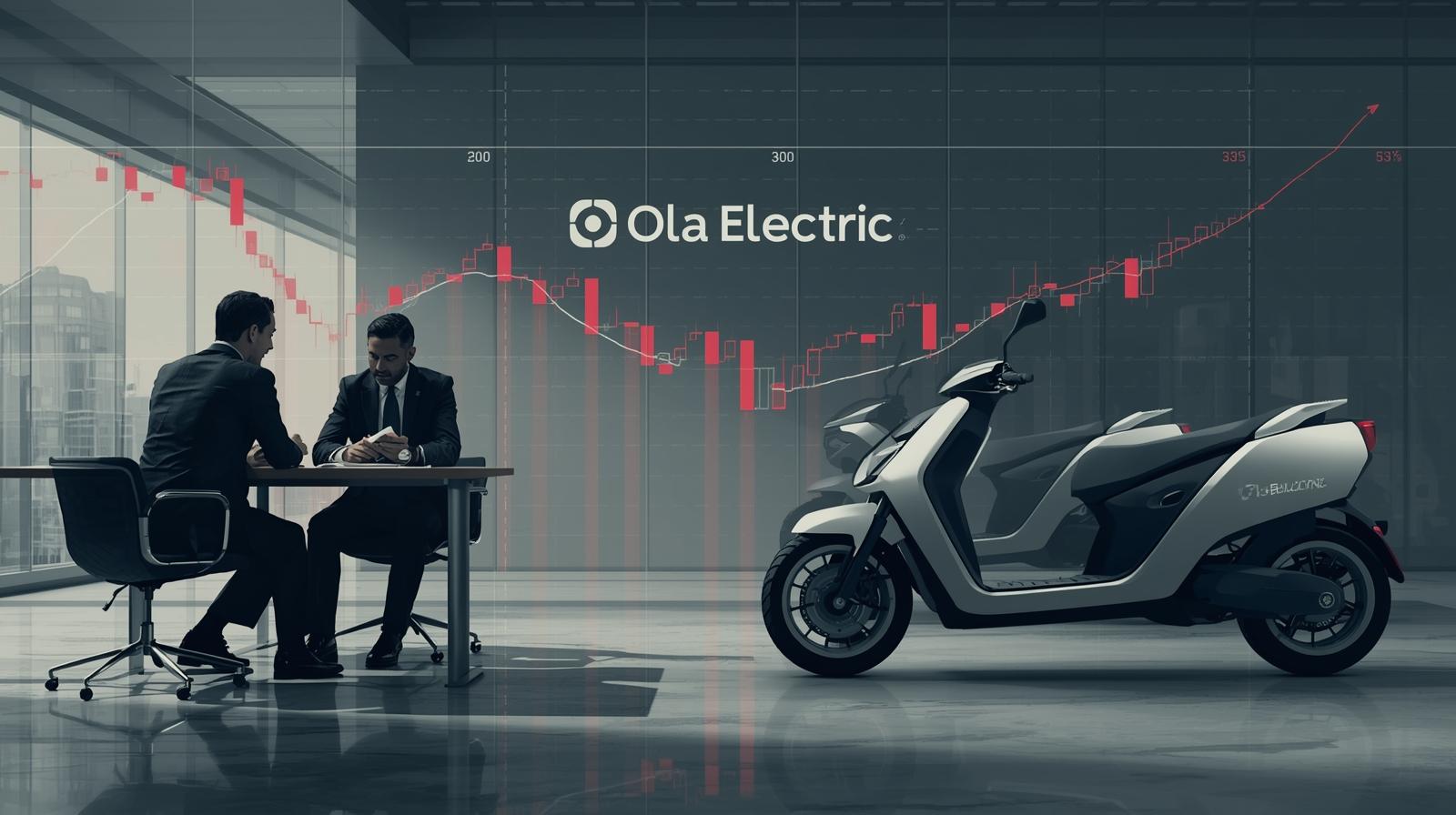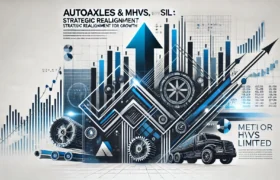1. Executive Summary
Ola Electric, a leading electric vehicle manufacturer in India, is facing a critical operational and governance challenge. Its statutory auditor, BSR & Co. LLP, has identified a material weakness in internal controls, particularly in the physical verification of inventory at its subsidiary, Ola Electric Technologies. This subsidiary contributes the majority of the company’s revenue, making the audit findings highly significant.
The revelation has had immediate consequences for the company, including regulatory scrutiny, declining investor confidence, and stock price volatility. This report examines the auditor’s findings, market impact, investor sentiment, regulatory context, operational implications, and future strategic outlook, offering a detailed overview of the current Ola Electric scenario.
2. Background: Ola Electric and the Indian EV Market
Founded in 2017, Ola Electric Mobility Pvt. Ltd. quickly became a prominent player in India’s EV ecosystem. The company’s product line includes:
- Ola S1 and S1 Pro scooters: High-demand electric scooters in urban India.
- Ola Gen 3 platform: New scooters launched in 2025 with enhanced battery life and features.
- Future three-wheeler segment: Scheduled for launch in late 2025, targeting the commercial EV market.
India’s EV market is growing rapidly, supported by government initiatives like the Production Linked Incentive (PLI) scheme, state-level subsidies, and increasing urban demand for sustainable mobility. Despite this growth, the sector is highly competitive, and operational transparency is critical for investor and consumer confidence.
3. Auditor-Flagged Internal Control Weakness
3.1 Auditor Findings
BSR & Co. LLP, Ola Electric’s statutory auditor, flagged a material weakness in FY25. The key concerns were:
- Inadequate physical verification of inventory at stores and state distribution centers.
- Potential misstatements in inventory, cost of materials consumed, and work-in-progress accounts.
- Discrepancies between internal records and reports filed with banks (e.g., Bank of Baroda and Yes Bank).
Example: In December 2024, Ola Electric reported ₹367 crore in inventory internally, while bank reports indicated ₹341 crore, signaling potential inaccuracies (medianama.com).
3.2 Regulatory Scrutiny
The audit findings coincided with increased regulatory attention:
- Ministry of Heavy Industries: Directed ARAI to investigate discrepancies between reported sales and official registration data.
- Example: February 2025, Ola claimed 25,000 scooters sold, but government data showed only 8,600 units registered.
- Transport authorities in multiple states conducted raids, issued show-cause notices, and inspected inventories.
Additionally, CCPA complaints highlight over 10,000 consumer grievances regarding delivery delays, after-sales service, and quality issues. These combined factors amplify reputational risks.
4. Financial Performance Overview
4.1 Q1 FY26 Financials
- Revenue from operations: ₹828 crore, down from ₹1,644 crore in Q1FY25 (≈50% decline).
- Net loss: ₹428 crore, up 23% from ₹347 crore in Q1FY25.
These figures suggest a strain on liquidity, potentially limiting investments in R&D, marketing, and expansion initiatives.
4.2 Stock Market Impact
Ola Electric’s stock has been highly volatile:
- Following auditor revelations, shares fell 7.25% in a single session, closing at ₹59.91.
- SoftBank, a major investor, reduced its stake from 17.83% to 15.68%, signaling caution.
- Other early investors, including Tiger Global and Z47 (Matrix Partners India), also trimmed holdings.
Despite this, August 2025 saw a temporary 60% rally due to optimism over the government’s PLI scheme. Analysts remain cautiously optimistic, but the auditor concerns have tempered market enthusiasm.
5. Strategic and Operational Implications
5.1 Governance and Compliance Risks
- Weak internal controls may violate corporate governance norms and regulatory compliance.
- Potential penalties or sanctions could be imposed if discrepancies are confirmed.
5.2 Operational Inefficiencies
- Inventory inaccuracies can disrupt supply chains.
- Production delays could occur due to mismanagement of raw materials and stock verification errors.
5.3 Reputational Damage
- Consumer complaints and negative media coverage could reduce brand trust.
- Long-term impact on market share if customer confidence declines.
5.4 Financial Constraints
- Increased losses limit capacity for expansion and R&D.
- Could affect three-wheeler project and Gen 3 production scaling.
6. Investor and Market Outlook
6.1 Short-Term Impact
- Increased selling pressure as investors react to audit findings.
- Stock price volatility expected until management addresses deficiencies.
6.2 Long-Term Potential
- Government PLI incentives could boost profitability if operational weaknesses are corrected.
- Three-wheeler launch in late 2025 expands revenue streams.
- Analysts like Goldman Sachs maintain cautious optimism with revised target prices around ₹72, citing EV market potential.
7. Recommendations
- Strengthen Internal Controls:
- Conduct regular physical inventory audits.
- Implement automated inventory tracking and reconciliation.
- Enhance Transparency:
- Publicly share production and sales data consistent with registration records.
- Regulatory Engagement:
- Cooperate with ARAI and state transport authorities.
- Address consumer complaints proactively to reduce legal exposure.
- Investor Relations Strategy:
- Provide detailed updates on corrective actions.
- Restore confidence through transparent financial reporting.
- Operational Improvements:
- Integrate ERP and supply chain management systems.
- Strengthen after-sales service to reduce complaints.
8. Conclusion
Ola Electric’s auditor-flagged internal control weakness underscores the importance of robust governance, operational transparency, and regulatory compliance. While short-term impacts include stock volatility and investor caution, effective remediation and leveraging government incentives can position Ola Electric for sustainable growth in the Indian EV market.
Immediate corrective measures, proactive investor communication, and operational optimization will be crucial for restoring market confidence and achieving strategic objectives such as the upcoming three-wheeler launch and expansion of Gen 3 scooters.
📉 Stock Market Disclaimer
Disclaimer: This post is for informational and educational purposes only and does not constitute financial advice or a recommendation to buy/sell any stock or share. Investing in the stock market involves risk. Past performance is not indicative of future results. Always conduct your own research or consult a licensed financial advisor before making investment decisions.






